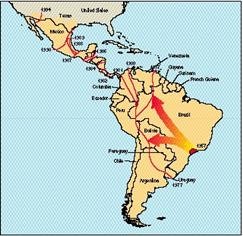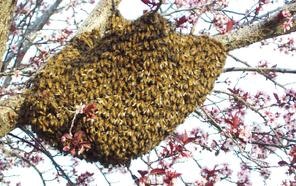History of Africanized Honey Bees

In the early 1600's European settlers introduced European Honey Bees (EHB) to North and South America. Those bees were found to be good honey producers in the temperate climates of North America, but did poorly in the tropical and subtropical South. To increase the honey production, the Brazilian government was looking for a more suitable species of honey bees. They found a strain of bees from South Africa to be good honey producers, but they were rather aggressive. In 1956, the scientists in Brazil tried to produce a hybrid that would have the gentle European characteristics and the increased honey production of the African Honey Bees.
Unfortunately the experiment didn't work they way it was supposed to and the hybrid turned out to be a good honey producer, but highly aggressive. About one year later, some bees escaped out of their hives and developed into feral or wild colonies and soon began to spread throughout South America. These feral bees were called Africanized Honey Bees (AHB), since they still showed the aggressiveness and the characteristics of the African bees. Later the media gave them the name of "Killer Bees" to describe their aggressive behavior and since multiple stinging incidences had killed several humans, domestic animals, and livestock.

The first AHB's arrive in the US in October 1990 and were found in Texas. From there they spread throughout the state and then moved on to New Mexico and Arizona. In October 1993 a swarm of AHB's was detected in California, west of Blythe in Riverside County. In 1999 the first swarm of AHB's was found in Palmdale, and now all bees in Southern California are considered Africanized.
